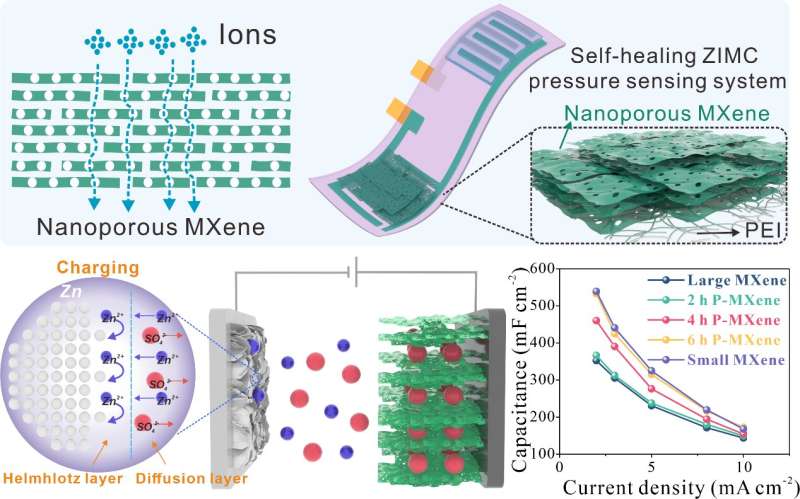Maximizing ion accessibility in nanoscale ion-channel MXene electrodes for zinc-ion energy storage

With highly hydrophilic surfaces and superior metal conductivity, two-dimensional transition-metal carbides (MXenes) are highly valuable in the field of electrochemical energy storage. However, the easy stacking inclination of interlayers would lead to reduced ion accessibility and available transport paths within MXenes, thus limiting their electrochemical performance.
In order to fully exploit the advantages of MXenes in electrochemical energy storage and suppress the self-stacking behavior, a series of methods have been developed. Hole etching is considered to be one of the effective strategies to improve ion accessibility and transport efficiency, which can be applied to the construction of high-performance energy storage devices.
The fabrication of nanoscale ion-channel electrodes by chemical etching has good application prospects. However, controlling the degree of chemical etching for efficient modulation of electrochemical energy storage remains a great challenge.
In a Science Bulletin paper, based on the design concept of nanoscale in-plane ion channels, MXene nanosheets with in-plane ion-channels are prepared by chemical oxidation and are turned into electrodes for constructing self-healing Zinc-ion microcapacitors (ZIMC) with excellent anti-self-discharge properties.
The MXene nanosheets with in-plane ion-channels can effectively shorten the ions' transport distance and improve the electrochemical performance of ZIMC, while retaining the excellent mechanical strength and electrical conductivity of large-sized MXene nanosheets.
The fabricated self-healing MXene-based Zinc-ion mircocapacitor exhibits high areal specific capacitance (532.8 mF cm–2) at the current density of 2 mA cm–2, low self-discharge rate (4.4 mV h–1) and high energy density of 145.1 μWh cm–2 at the power density of 2800 μW cm–2. The fabricated ZIMC has excellent anti-self-discharge properties and self-healing capabilities, which could support microelectronic devices for a long time, and has great potentials in application of flexible electronics.
Based on the design of nanoscale ion channels, MXene electrodes with maximized ion accessibility and high mechanical strength are constructed and can be used for high-capacity Zinc-ion energy storage. The design of in-plane ion channels provides a simple, efficient and scalable approach to effectively improve the electrochemical energy storage capacity of MXenes and other 2D materials.
More information: Yongfa Cheng et al, Maximizing the ion accessibility and high mechanical strength in nanoscale ion channel MXene electrodes for high-capacity zinc-ion energy storage, Science Bulletin (2022). DOI: 10.1016/j.scib.2022.10.003
Provided by Science China Press



















